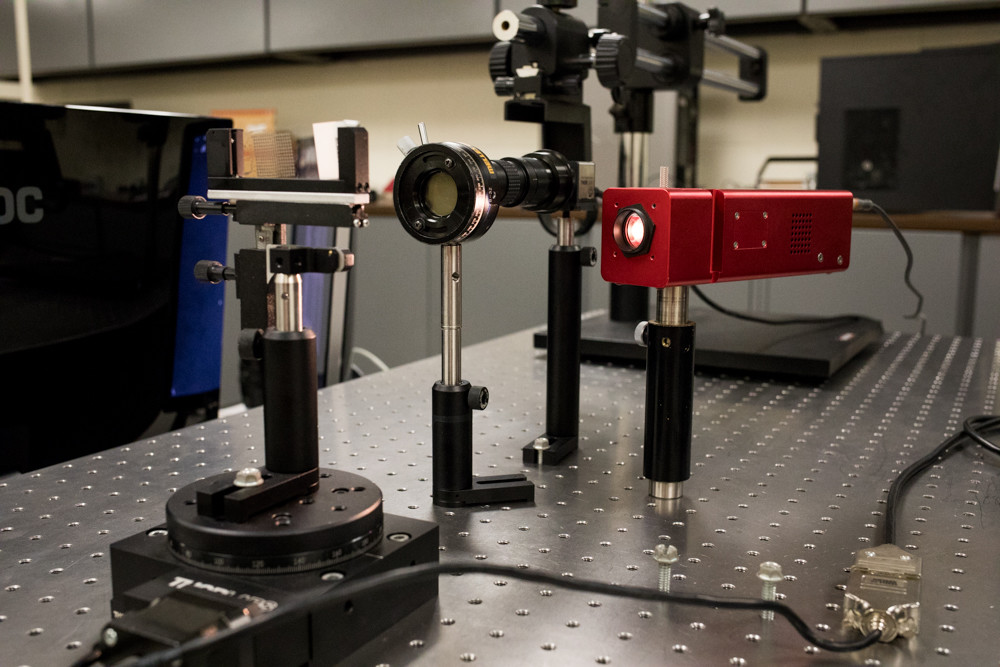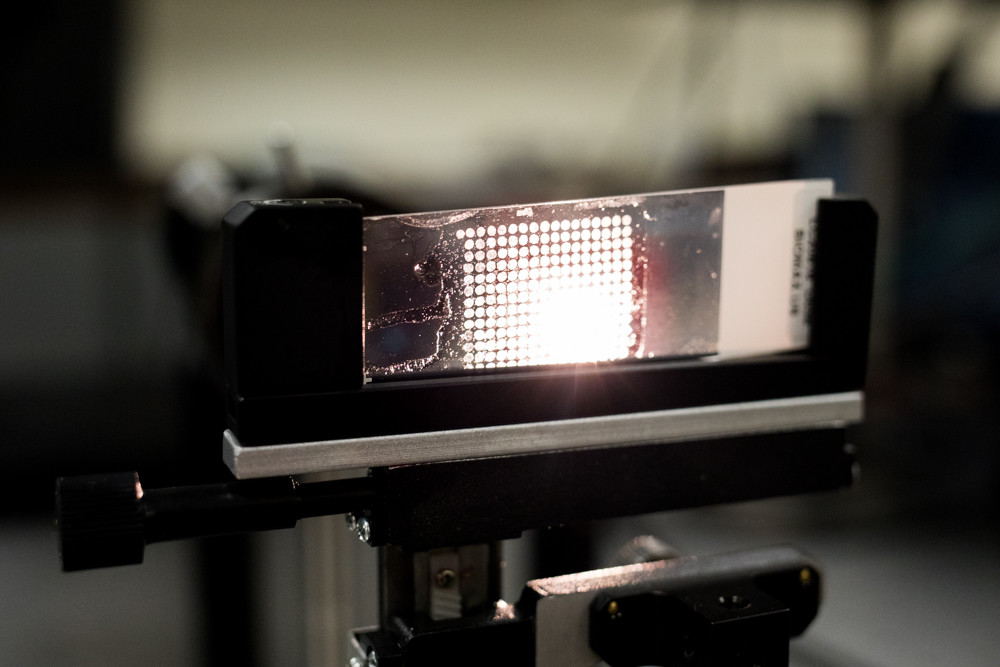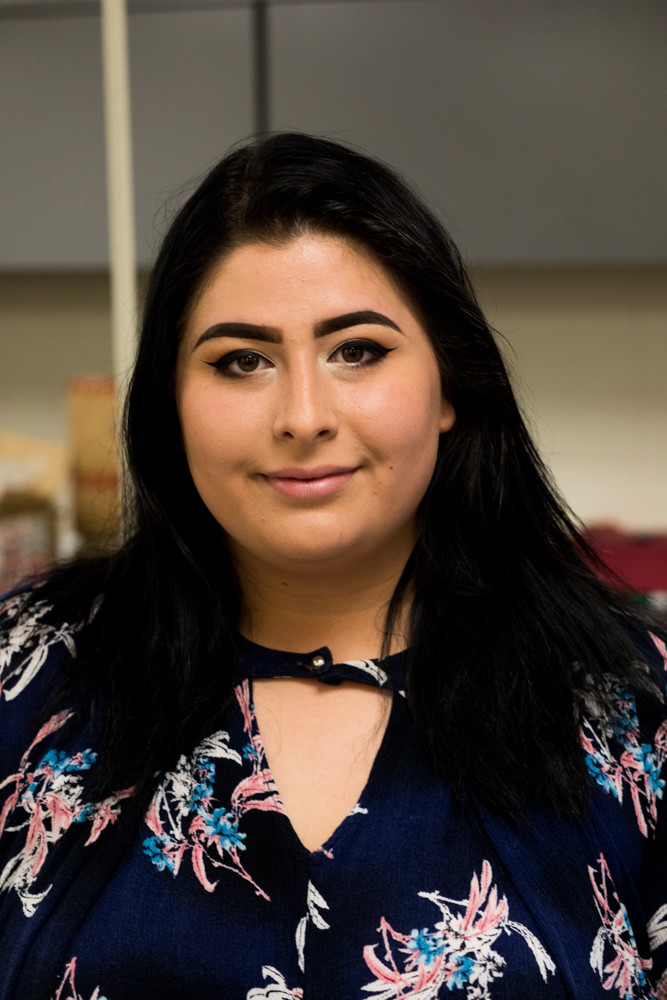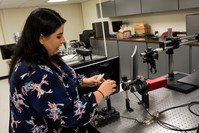Building a new weapon in battle against cancer
When it comes to cancer, early detection is key. It’s what motivates Gloria Bauman, a grad student at Manhattan College on a project she hopes will lead the way to even faster detection equipment.
And she’s lending a hand to a rather unlikely source: George Giakos, a professor of electrical and computer engineering.
Technology is deeply intertwined with medicine, of course, and what Bauman and Giakos have cooked up is no different. The two are developing a smart imaging system that can not only detect various kinds of cancer, but their stages and grades as well.
“I believe this new approach could possibly improve the diagnostic process for lung cancer screening, as well as improve the overall quality of patient care,” Bauman said.
She earned her bachelor’s degree this past May and is working toward her master’s in electrical engineering with a concentration in bioelectrical engineering.
But when Bauman isn’t in class, she’s in the lab. Those days are filled with developing new ideas, designs and concepts that apply engineering principles to clinical research. Bauman then meets with Giakos, discussing challenges and ways to improve their diagnostic imaging system.
Most cancer detection begins with a biopsy. But with Bauman’s smart computer vision system, the process can start differently. Biopsies can take weeks to process. Bauman’s system, if it works, would provide quicker analysis and diagnosis, which could speed up treatment, and thus boost survival rates.
It could be a key weapon in battling lung cancer, Bauman said.
Giakos has been focused on developing efficient lung cancer detection since 2008, working not just with Bauman, but some of her student predecessors as well — people like Tannaz Farrahi, Suman Shrestha and Aditi Deshpande. The study was funded partially by a $400,000 U.S. Air Force contract.
When Bauman discovered Giakos was researching lung cancer cell imaging, she couldn’t pass up the opportunity to be his research lab assistant.
“I had no idea that electrical engineering could be applied to the medical field,” Bauman said upon learning about Giakos’ project.
“This piqued my interest.”
But there’s a personal connection as well. Bauman’s grandfather was stricken with lung cancer when she was very young. She doesn’t remember much about his illness, but as she learned more about what he went through from other family members growing up, it affected her deeply.
“From what my family tells me, I know that waiting to hear whether my grandfather had lung cancer or not was a very tiring time,” Bauman said. “I feel that if the diagnostic process was expedited, then my grandfather would have been treated sooner.”
Bauman spends up to 20 hours a week in the lab. Together she and Giakos use a variety of tools such as optical filters, cameras and imaging processing codes, all while exploring and generating new ideas that can improve the efficiency of imaging techniques designed to diagnose various types of lung cancer.
Bauman has been valuable, Giakos said, with a “high degree of enthusiasm and motivation.”
“Enthusiasm and motivation are very important ingredients to the advancement of knowledge,” he added.
Although her job is to assist Giakos, the professor has a way to make anyone working with him in the lab feel like an equal, Bauman said. That means giving her the freedom to pursue her own ideas and hypotheses for their research — something a lab assistant is always welcome to do.
“He is very supportive of me in the challenges I face in this research,” Bauman said. “We are working as two lab partners.”
Bauman’s path to electrical engineering wasn’t automatic. In fact, it wasn’t until a professor from Manhattan College’s engineering department visited her high school to talk about the importance of women in engineering that she felt the spark inside her.
And now she has a chance to follow in the footsteps of students behind her to make a difference.
“I believe this is important because when we integrate technology with the health care field, we have an opportunity to open doors to new fields such as biomedical engineering, biotechnology, bioinformatics and similar fields,” Bauman said. “These new fields allow researchers and medical professionals to work collaboratively to improve the quality of life for those suffering from debilitating diseases.”













